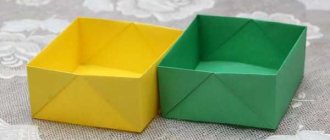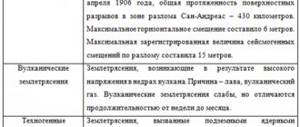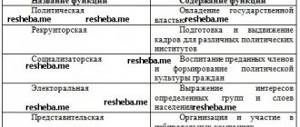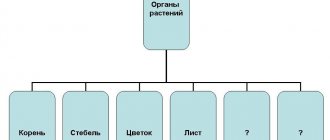Instruction cards used in technology lessons. Instruction card 1. Using a marking tool. Exercises: 1. Applying marks using a metal measuring ruler and scriber. 2. Punching. 3. Using a marking compass. 4. Use of center finders. 5. Using a reimus. 6. Sharpening and refilling of marking tools. Equipment, tools and devices: • metal measuring rulers; • scribers; • marking compasses; • single-needle reimuses; • vertical rulers; • center finders; • center finders; • cores; • mechanical punches; • metalworking hammers; • wooden blocks; • marking plate; • templates for checking the sharpening angle of the punch; • grinding stones. Instruction card 2. Using the measuring tool. Exercises: 1. Measurement with a ruler (measuring metal). 2. Measurement with a caliper. Tools and accessories: • metal measuring rulers; • calipers with a vernier reading value of 0.1 mm. Instruction card 3. Marking flat surfaces (marking with straight lines). Exercises: 1. Preparing the metal surface for work. 2. Applying mutually perpendicular marks. 3. Applying parallel marks. 4. Marking with dimensions measured from the center line and from the edge of the workpiece. 5. Applying marks located at an angle to each other. Tools: • metal measuring rulers; • marking compasses; • scribers; • flat squares with a wide base 90; • cores; • marking protractors. Equipment and materials: • marking plate; • sandpaper (skin); • copper sulfate; • chalk; • quick-drying varnishes and paints; • metal brushes; • scrapers; • casein glue; • rags. Instruction card 4. Marking flat surfaces (marking with curved lines). Exercises: 1. Marking circles and dividing them into parts. 2. Pairing straight lines with curves. 3. Connecting curved lines with straight lines. 4. Marking curved contours of flat parts. Tools: • marking compasses; • metal measuring rulers; • metalworking hammers weighing 200 g; • cores; • scribes. Equipment and materials: • marking plate; • templates for marking; • sandpaper (skin); • chalk; • varnish; • casein glue; • copper sulfate; • brush; • bench clamps. Instruction card. Metal cutting. Exercises: 1. Cutting strip metal at the level of the vice jaws. 2. Cutting down a layer of metal on a wide flat surface. 3. Cutting out curved grooves. 4. Cutting metal on a stove. 5. Sharpening the cutting tool. Equipment and tools: • metalworking hammers weighing 500-600 g; • metalworking chisels 175 mm long; • ditchers; • metal measuring rulers; • scribers; • cores; • marking templates; • sharpening machine; • templates for checking sharpening angles. Equipment and materials: • parallel vice; • plate for chopping (anvil); • chalk; • safety glasses. Instruction card. Metal editing. Exercises: 1. Straightening of strip metal bent in a plane. 2. Editing round metal. 3. Straightening metal bent along an edge. 4. Editing sheet metal. Tools and equipment: • metalworking hammers weighing 500-600 g; • hammers with soft metal inserts; • a sledgehammer weighing 1.5 kg; • rulers; • screw press. Equipment and materials: • straight plate (anvil); • soft metal linings. Instruction card. Metal cutting. Training exercises: 1. Mastering the working position when cutting. 2. Throwing punches. 3. Elbow strikes. 4. Shoulder strikes. Tools and accessories: • metalworking hammers weighing 500-600 g; • wooden blocks or training devices. Instruction card. Metal bending. Exercises: 1. Bending in a vice. 2. Bending using devices. Tools and equipment: • metalworking hammers weighing 500 g; • measuring ruler; • marking tool (scriber, marking compass); • screw press. Equipment and materials: • vice; • different mandrels; • different bending dies; • bending device for scribers. Instruction card. Cutting metal with a hacksaw. Exercises: 1. Installing the blade into the hacksaw frame. 2. Mastering the working position when cutting metal with a hacksaw. 3. Cutting metal with a hacksaw. Equipment and materials: • parallel vice; • wooden spacers (clamps); • chalk; • machine oil. Instruction card. Cutting metal with scissors. Exercises: 1. Cutting metal with hand scissors. 2. Cutting metal with lever scissors. Tools and material: • hand scissors; • measuring ruler; • marking tools (marking compasses, punch); • lever scissors; • chalk. Instruction card. Filing. Exercises: 1. Mastering the working position when filing. 2. Mastering working movements when filing. Tools: • flat, blunt-nosed files with notches No. 1 and No. 2, 250-300 mm long. Equipment: • parallel vice; • training devices or channels No. 10.
Technology (girls) - lessons, tests, presentations, notes
Create your teacher website PC and PPC courses Video lessons Olympiad Webinars for teachers
- home
- Technology (girls)
Watch and download free lessons, tests, notes, presentations and other useful materials on technology for teachers and students.
- All 5848
- Lessons 2757
- Presentations 1291
- Tests 227
- Planning 465
- Events 327
- Other 781
- All classes
- For preschoolers
- 1 class
- 2nd grade
- 3rd grade
- 4th grade
- 5th grade
- 6th grade
- 7th grade
- 8th grade
- 9th grade
- Grade 10
- Grade 11
| Sabaktyn takyryby: Shyғarmashylyқ zhumysty oryndau Korkem enbek pәnіnің muұgalimderіne arnalgan kosymsha komek kuraly retinde usynlady…. 09.25.2020 Nurzhanova Aigerim Aldabergenovna 29 0 |
| All-Russian distance competition for teachers of technology, music, MHC and drawing for the best methodological development “Lesson outline” “Hand sewing works”. Tasks. Training: To help memorize the basic terminology of hand sewing (stitch, stitch length, line, seam, seam width)…. 08/19/2020 Gazieva Muslimat Magomedovna 71 0 |
| Sewing technology lesson in 6th grade Topic: “Finishing products with soft folds” Goal: creating conditions for developing skills in finishing products and expanding sewing skills Objectives: to promote the formation of skills and abilities in... 08/19/2020 Gazieva Muslimat Magomedovna 90 0 |
| Table “Spoons and glasses instead of scales” In culinary literature, quantities are measured not in glasses, but in cups. But this doesn’t really change anything, because... a cup is the same glass filled to the brim - the same 250 ml…. 05/22/2020 Potapova Maria Vladimirovna 80 1 |
| Construction materials and their choice. Brief information about textile fibers. Structure of tissue. The front and back sides of the fabric. To familiarize students with the types of construction materials and textile fibers; form an idea of the structure of tissue; teach to recognize the front and back sides of fabric; bring up neat... 08/16/2020 Kulikova Valentina Petrovna 88 0 |
| Generalization of teaching experience In my work, I listed all types of technologies that I use when teaching students in the seamstress profession... 05/18/2020 Elena Borisovna Nikitina 98 0 |
| Marchenko Svetlana Nikolaevna Development of the lesson “Amazing Pizza”, section Cooking, for the textbook Technology 7th grade, authors: O.A. Kozhina, E.N. Kudakova, S.E. Markutskaya… 09/10/2020 Svetlana Nikolaevna Marchenko 34 0 |
| Technology lesson on the topic: “Decorative flowers from napkins” Topic of the lesson: “Decorative flowers from napkins.” Goal: To teach how to make decorative flowers from napkins. Tasks: 08/19/2020 Gazieva Muslimat Magomedovna 98 0 |
| Technology lesson 6th grade “Natural fibers of animal origin. Properties of natural fibers of animal origin" During the technology lesson, students will study various types of natural fibers and natural materials of animal origin. ... 08/23/2020 Gardash Alla Viktorovna 104 0 |
| Lesson - Counted stitches. One-sided counted stitch - "bricks" Lesson outline - Counted stitches. One-sided counting surface - “bricks”... 09.23.2020 Varlamova Galina Vasilievna 54 0 |
| Connection of the collar with the neck. Purpose of the lesson: to familiarize students with the types of collars, with the technology of connecting the collar to the neck…. 10/04/2020 Shayakhmetova Rimma Rinatovna 28 0 |
| Open lesson on the topic: Table setting. 5kl Lesson type: lesson on mastering new material. Objective of the lesson: with... 08/19/2020 Gazieva Muslimat Magomedovna 87 0 |
| Processing buttonholes on a sewing machine. Development of a sewing lesson in 7th grade. Processing loops on a sewing machine. Lesson using an interactive whiteboard…. 08/17/2020 Mantulenko Elena Nikolaevna 61 0 |
| Flax fiber and its properties. To familiarize students with the types of natural fibers of plant origin and their properties.... 10/04/2020 Shayakhmetova Rimma Rinatovna 29 0 |
| Lesson summary “Sewing on a button” To introduce different types of buttons when making garments. Learn to apply the acquired knowledge in practice... 09.29.2020 Marina Vasilievna Chengaeva 55 0 |
| Terminology of cut details and structural elements Bodice - the upper part of women's shoulder clothing 05/22/2020 Potapova Maria Vladimirovna 85 0 |
| Career guidance work with students in technology lessons In the work of a technology teacher, a special place is occupied by the professional guidance of students. Real life conditions require a flexible approach to completing more and more new tasks... 10/07/2020 Zubareva Marina Evgenievna 31 0 |
| Production of natural fabrics Types of natural fibers. Obtaining natural threads and fabrics…. 09.21.2020 Vinogradova Tamara Vladislavovna 86 0 |
| “Making a textile doll as a way to decorate the space of an apartment and improve sewing skills” Development of an interior doll. Finding your style... 09.27.2020 Levanova Natalya Ivanovna 38 0 |
Making a painting using the isothread technique for decorating the interior of a room. Introduce students to making paintings using the isothread technique. Develop and produce a painting according to the scheme. Self-realization when doing work.... 08/16/2020 Kulikova Valentina Petrovna 78 0 |
- ← Back
- Continue →




